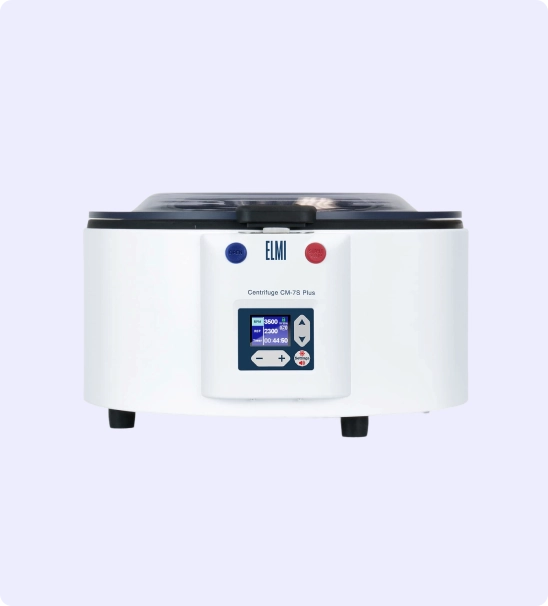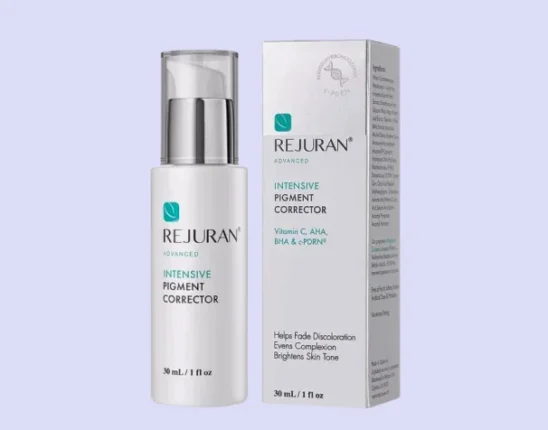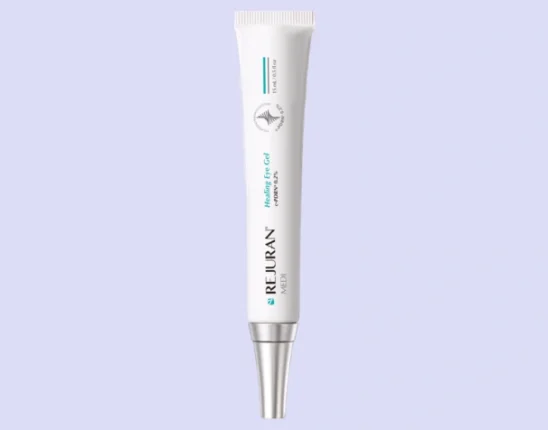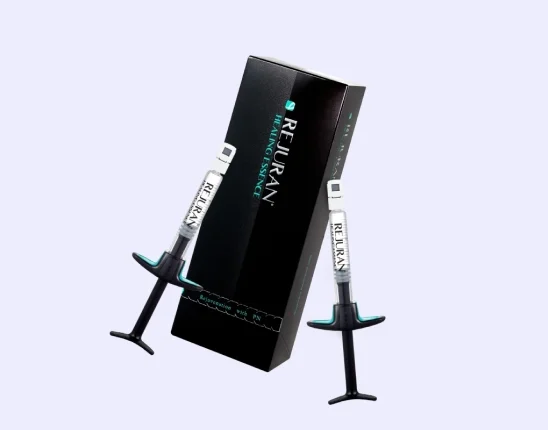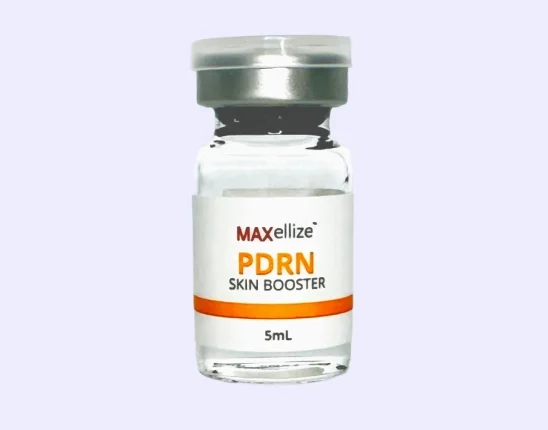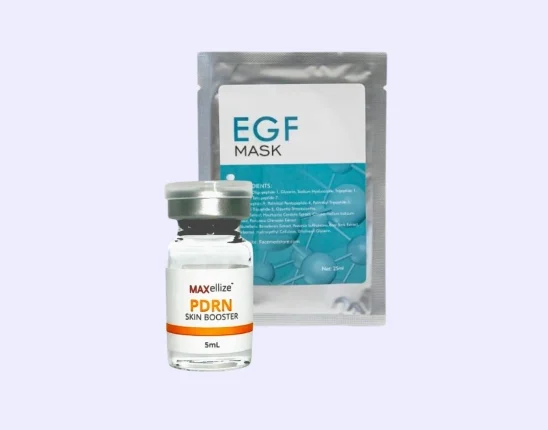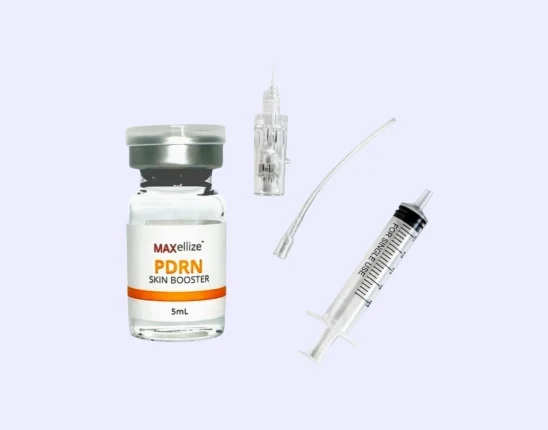Taking or applying drugs to our bodies sometimes comes with unwanted side effects. This is because the human body works in a complex way, in that taking or applying a drug won’t target just one thing but would also risk affecting other aspects of the body’s processing. One of these side effects is hair loss when one applies ciclopirox olamine cream.
So can PRP injections help solve hair loss from ciclopirox olamine cream? Yes, PRP injections can help solve hair loss from ciclopirox olamine cream. PRP is an effective hair loss treatment that works through growth factors that encourage the production of new blood vessels, prolongation of the anagen phase of the hair growth cycle, and regulation of anti-apoptotic mediators.
How Seborrheic Dermatitis is Linked to Hair Loss
Seborrheic dermatitis is an inflammatory skin disease affecting the scalp, face, and body folds, which are the areas of the body rich in sebaceous glands (the glands that produce sebum or oil). The exact cause of this skin condition is still unknown, although several possible etiologies are pointed out, such as the following:
- impaired response to fungal infection of Malassezia sp.
- increased amounts of unsaturated fatty acids on the skin’s surface
- individual susceptibilities such as due to the disruption of the epidermal barrier associated with genetic factors, and poor nutrition
This skin disorder is also associated with hair loss because of the itchiness that results from the inflammation and irritation due to the pronounced production of sebum. This itchiness causes the person suffering from the disorder to relentlessly scratch their scalp, damaging hair follicles which then leads to impairments in natural hair growth, ultimately leading to hair loss.
Ciclopirox Olamine: A Drug Against Seborrheic Dermatitis That Exacerbates Hair Loss
Seborrheic dermatitis is usually treated using ciclopirox olamine cream, an agent with antifungal, antibacterial, and anti-inflammatory properties, which works by chelation of Fe3+ that has an inhibitory effect on microbial enzymes, along with inhibition of metal-dependent enzymes.
Studies have shown the efficacy and safety of ciclopirox olamine cream in patients with seborrheic dermatitis. Shampoo forms of this antifungal also are shown to reduce the remission of seborrheic dermatitis.
However, ciclopirox olamine cream isn’t without side effects. One of the side effects of this antifungal is hair loss, which is ironic considering this agent addresses seborrheic dermatitis and should then promote the prevention of hair loss caused by seborrheic dermatitis.
Other Antifungals and Their Effect on Hair Growth
Hair growth was supposedly the effect of the application of antifungals to the scalp because treatment of Malassezia, the causative agent of scalp disorders like seborrheic dermatitis, psoriasis, and atopic dermatitis, means controlling the oxidative stress caused by the said fungal species.
Although not consistent with that in ciclopirox olamine cream, other antifungals have demonstrated this effect, such as ketoconazole and zinc pyrithione-based shampoo.
Ketoconazole
Studies have shown that the use of 2% ketoconazole shampoo, aside from being an effective treatment against seborrheic dermatitis, may also be used against androgenetic alopecia. This is because ketoconazole has hair growth stimulating properties, although the exact mechanism behind this is yet to be elucidated.
Shampoo Containing Zinc Pyrithione
A zinc pyrithione-based shampoo was demonstrated to have comparable effects on hair growth when compared to 5% topical minoxidil. This is because of the decreased oxidative stress associated with the use of zinc pyrithione-based shampoo.
Other Drugs that Cause Hair Loss
Hair loss may also be caused by other drugs, not just ciclopirox olamine cream. This is a condition called drug-induced alopecia, a kind of hair loss that occurs 3 months after the use of certain drugs.
Some of the drugs that cause drug-induced alopecia are as follows:
Telogen Hair Loss
Some drugs affect the hair growth cycle at the telogen phase and cause hair loss due to disruptions in this phase. These drugs include the following:
- amphetamines
- topical steroids
- nonsteroidal anti-inflammatory drugs (NSAIDs)
- vitamin A-based medications
- anti-seizure medications
- antidepressants like paroxetine, fluoxetine, and sertraline
- angiotensin-converting enzyme (ACE) inhibitors
- birth control pills
- blood thinners
- cholesterol-lowering drugs
- medications that address gastrointestinal problems like famotidine
- hormone replacement therapy
- levodopa and other medications for Parkinson’s disease
Anagen Hair Loss
In contrast to this, some drugs affect the hair growth cycle at the anagen phase and cause hair loss due to disruptions in this phase. These drugs include the following:
- chemotherapy drugs
- medications that contain arsenic, bismuth, boric acid, and thallium as ingredients
- colchicine
How PRP Injections Can Help Solve Hair Loss From Ciclopirox Olamine Cream
Drug-induced alopecia usually goes away on its own upon stopping the medication that causes it. However, in cases where hair loss persists even after stopping the medication, hair loss treatments such as platelet-rich plasma injections should be considered.
Platelet-rich plasma injections can help solve hair loss from ciclopirox olamine cream and other types of hair loss through mechanisms that are yet to be elucidated. However, some proposed mechanisms include the following:
- Promotion of the production of new blood vessels due to growth factors
- Promotion of cellular growth and differentiation due to growth factors
- Promotion of the prolongation of the anagen phase (the growth phase of the hair growth cycle)
- Mediation of the anti-apoptotic (anti-programmed cell death) regulators
How PRP Injections are Obtained and Administered
Platelet-rich plasma injections are an autologous preparation, meaning the formulation is derived from the patient’s own blood components. Standardization of the process is still being discovered, although all platelet-rich plasma preparation comes in a 3-step procedure. These 3 steps may be simplified as follows:
- Blood draw – Platelet-rich plasma procedure is initiated by the collection of blood by medical equipment like syringes with anticoagulants.
- Blood sample processing – The collected blood sample will then be subjected to centrifugation. Protocols for the optimum centrifugation parameters are yet to be elucidated.
- Administration of platelet-rich plasma – Administration of platelet-rich plasma may be done via injection on the affected site, which may be done intradermally or subcutaneously. They’re injected with even spaces from each other.
There are also competing views regarding the need for activation of platelet-rich plasma before use. In protocols that do activate, calcium gluconate is one of the most commonly employed activators. Commercial kits for platelet-rich plasma preparation are also available.
Safety of PRP Injections
Since platelet-rich plasma injections are derived from the patient’s own blood, it’s then guaranteed to be safe and free from reactions associated with the administration of foreign bodies like allergic reactions and being risk factors for the transmission of communicable diseases.
Side Effects of Platelet-Rich Plasma Injections
Side effects associated with platelet-rich plasma injections are usually caused by the method of preparation and administration and not by the formulation itself. These side effects include the following:
- Injection site reactions – Injection site reactions associated with platelet-rich plasma injections include pain, redness, swelling, and bruising at the injection site.
- Infections (rare) – Although rare, infections still happen, which may be due to unsanitary preparation of the platelet-rich plasma formulation.
- Nerve and tissue injuries (rare) – Nerve and tissue injuries are also rare complications of platelet-rich plasma, which may be dependent on the skills of the one administering the procedure.
The Comfort of Platelet-Rich Plasma Injections
Platelet-rich plasma injections are also made as comfortable as possible by medical professionals who administer them to patients with hair loss. Common techniques employed to minimize discomfort associated with the procedure include the following:
- Administration of anesthetic agents – Anesthetic agents, which may be administered topically or via injections, may be used before undergoing the procedure to numb the area where the injections will be done.
- Use of vibration devices – Vibration devices are slowly becoming popular because of their ability to numb the area where the injections will be done by providing massage to the area and by diffusing the fluid.
- Use of very fine needles – Medical professionals usually use very fine needles, typically 31-gauge, to inject the platelet-rich plasma so as not to make it noticeable to the patient.
- Use of ice packs – Ice packs may be used to numb the pain associated with platelet-rich plasma injections. It may be used before the injections and may also be used after to reduce swelling and bruises.
With these safety considerations, it’s also important to keep in mind that platelet-rich plasma injections aren’t for everyone. People who can’t undergo this procedure include those with other medical conditions such as the following:
- Patients with low platelet count
- Patients with blood clotting disorders like hemophilia
- Patients with active infection
- Patients with systemic lupus erythematosus
- Patients with cancer
- Pregnant and breastfeeding women
GET MEDICAL-GRADE BLOOD COLLECTION NEEDLES AT 20% OFF WITH CODE “20OFF” ON YOUR FIRST ORDER.
Stock up on blood collection needles and other medical and aesthetic supplies with FACE Med Store. Checkout today and get 20% off your order.
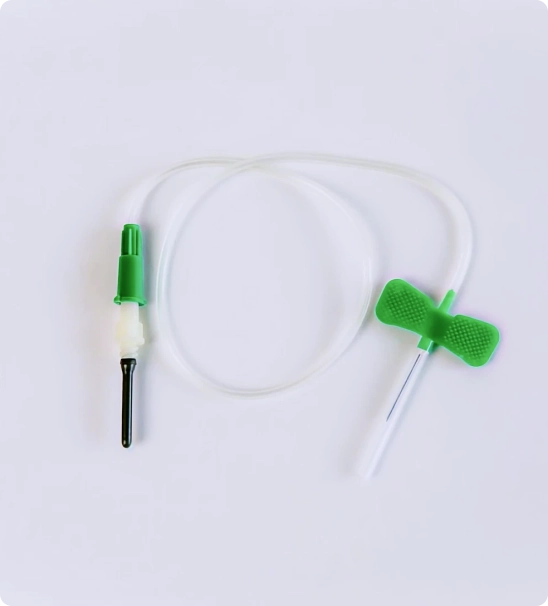
Pre- and Post-Care Tips for PRP Injections
Platelet-rich plasma injections are a safe and effective procedure with minimal downtime owing to their minimally-invasive administration. Patients who underwent this procedure may immediately return to their normal activities after the procedure, although pre- and post-care tips must still be followed to facilitate a faster recovery process after PRP injections.
Pre-Care Tips for PRP Injections
Prior to the treatment, it’s best to prepare oneself and the area where the formulation will be administered to prevent the aggravation of side effects. Pre-care tips include the following:
- With the advice of your healthcare provider, it’s best to discontinue the use of blood-thinning agents like vitamin E, vitamin A, anticoagulants, and anti-inflammatory drugs, as these medications may reduce the efficacy of PRP due to their effect on blood platelet functions.
- Prescription medications that don’t affect the efficacy of platelet-rich plasma injections must be continued.
- Exposure to direct sunlight must be avoided especially in areas that are going to be treated.
- Alcoholic beverages and tobacco products must be avoided at least 3 days prior to the procedure.
- Proper hydration is a must, and increased fluid intake is advisable.
Post-Care Tips for PRP Injections
It’s also best to follow safety precautions after PRP injections despite their minimal downtime. Post-care tips include the following:
- Anti-inflammatory drugs must still be avoided after the procedure. Management of pain associated with the procedure may be done by using analgesics like acetaminophen.
- In cases of infection, seek to consult immediately. Your doctor may prescribe antibiotics that will help manage the infection caused by the injections.
- Strenuous activity like vigorous exercises must be avoided at least 2 days after the treatment.
- Wetting your hair at least 3 hours after the treatment must be avoided.
- Warm showers are best to do the evening after the procedure to further encourage the benefits conferred by the procedure.
- Hair loss medications like topical minoxidil must not be discontinued.
PEP Factor: An Innovative and High-Quality Hair Care Product
To further improve the hair growth benefits of platelet-rich plasma treatments, it’s advisable to combine this procedure with other formulations and procedures that can also promote the improvement of the appearance of thinning hair. One of these formulations that are good for the hair is the PEP Factor.
PEP Factor is an innovative and high-quality hair care product made of natural ingredients such as nourishing peptides. It’s also topically applied, thus ensuring its safety and minimizing the occurrence of side effects associated with injections or other ways of administration.
The active ingredients of the PEP Factor are the basic fibroblast growth factor (bFGF) and copper peptide. Basic fibroblast growth factor works in the same way as the growth factors found in platelet-rich plasma, in that it’s also capable of promoting the growth and proliferation of hair cells.
Similarly, the copper peptide has antioxidant properties, thus preventing the exacerbation of hair loss brought by oxidative stress.
Get Excellent Hair Treatments and Medical Supplies at FACE Med Store
Platelet-rich plasma injections are an effective procedure that promotes hair growth for drug-induced hair loss like that from ciclopirox olamine cream. It also works for other types of hair loss like androgenetic hair loss.
At FACE Med Store, we offer high-quality hair care products and medical supplies, especially for any hair health concern like hair growth or hair restoration. Our staff will gladly help our clients find what’s suitable for their specific beauty or medical concerns. Contact us today at info@facemedstore.com to learn more about the products that we offer.
